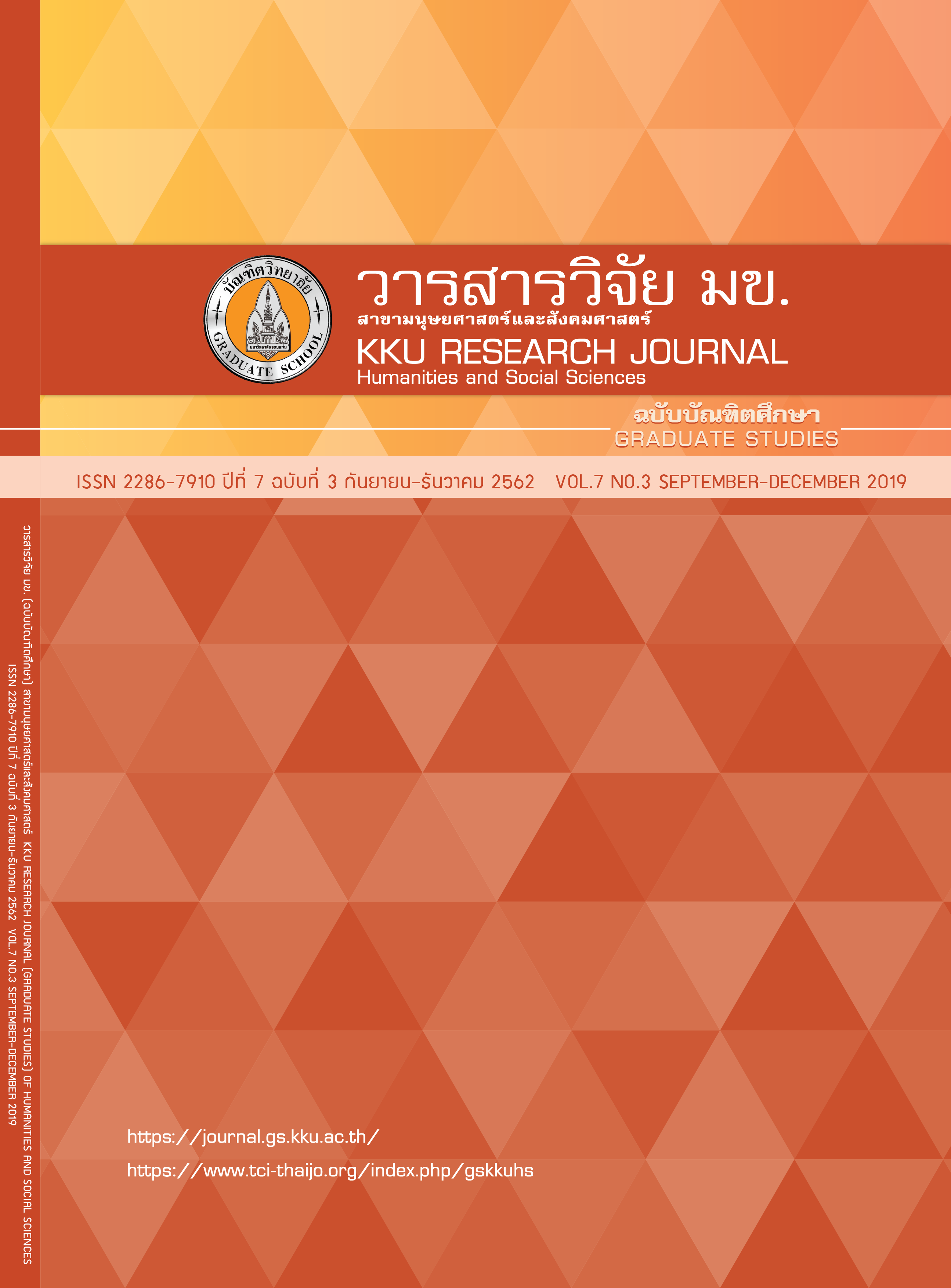Development of a Performance Appraisal System for Government Employees at the Provincial Statistical Office
Keywords:
System, Performance AppraisalAbstract
The study aimed: 1) to develop the performance appraisal system for the government employees used purposive sampling consisting of 14 government officials and government employees. The instrument was the evaluation to examine the quality of the appraisal system and its instruction. The data were analyzed with , 2) to analyze the results of the performance appraisal system for the government employees used purposive sampling consisting of 30 government employees. The instrument was the evaluation of the performance appraisal system and its instruction. The data were analyzed with Mann-Whitney U test, and 3) to evaluate the performance appraisal system for the government employees used purposive sampling consisting of 225 government official and government employees. The instrument is the evaluation of the appraisal system. The data were analyzed with and S.D. The findings were: 1) the performance appraisal system contained the input and output, process, and feedbacks; 2) the performance appraisal system showed a concurrent validity; and 3) the satisfaction with the performance appraisal system and the quality of the performance appraisal system were at the high level.
References
Resources Development. Bangkok: OCSC; 2005.
2. Diane A. Performance Appraisals: Strategies for Success. New York:
American Management Association. 2008.
3. Mathis RL, Jackson J. Human resource management (13th ed.).
Mason, OH: South-Western Cengage Learning; 2010.
4. Dessler G. Fundamentals of human resource management.
New Jersey: Pearson Higher Ed.; 2013.
5. BuoSonte. Personnel Evaluation: Using Evaluation and the Role of Evaluator.
Naresuan University Journal. 2010; 18(2), 91–96.
6. Khoungsimma Pornweenus. A Needs Assessment for the Development of a Performance
Appraisal System for Government Employees at the Provincial Statistical Office.
Educational Research and Evaluation Faculty of Education Mahasarakham University
(Unpublished manuscript). 2017.
7. Mondy RWD, Martocchio JJ. Human resource management. 12th ed.
New Jersey: Prentice Hall; 2012.
8. Mejang Samran, Pitiyanuwat Somwung. A New Approach to Performance Appraisal:
Theory and Practice. Bangkok: Chulalongkorn University Printing House; 2013.
9. Meesuta Alongkorn, Sachukorn Smit. Performance Appraisal. Bangkok: Technology
Promotion Association; 2008.
10. Giangreco A, Carugati A, Pilati M, Sebastiano A. Performance appraisal systems in
the Middle East: Moving beyond Western logics. European Management Review.
2010; 7(3), 155–168.
11. National Statistical Office. Strategic Plan for Human Resource Management,
National Statistical Office, Annual Budget 2014 - 2017. s.l.: s.n.; 2015.
12. Krejcie RV, Morgan DW. Determining sample size for research activities. Educational
and Psychological Measurement. 1970; 30(3), 607–610.
13. Gregory W, Foreman D. Nonparametric Statistics for Non-Statisticians.
Hoboken: John Wiley & Sons; 2009.
14. Gomez-Mejia LR, Balkin DB, Cardy RL. Managing human resources. 7th ed.
New Jersey: Prentice Hall; 2012.
15. Lussie RN, Hendon JR. Human Resource Management: Functions, Applications, and
Skill Development. Washington, D.C.: Sage; 2012.
16. Stair R. Principles of Information Systems. Boston: boyd & fraser publishing
company; 2014.
17. Schoderbek P, Schoderbek C, Kefalas A. Management System: Conceptual
Considerations. Homewood, IL: BPI/lrwin; 1990.
18. Noe RA, Hollenbeck JR, Gerhart B, Wright PM. Fundamentals of human resource
management. 4th ed. New York: McGraw-Hill/Irwin. 2012.
19. Delahaye BL. Human Resource Development: Adult Learning and Knowledge
Management. 2nd ed. New Jersey: John Wiley & Sons; 2005.




